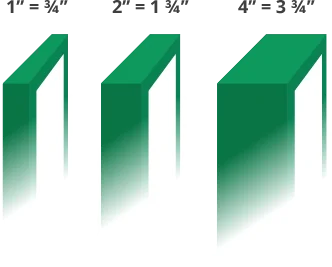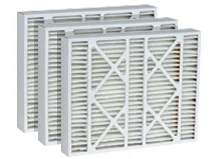The Smart Choice for Clean Air: Pleated Air Filters Explained
With their signature folds and intricate design, pleated air filters stand out, delivering unparalleled performance and efficiency.
These filters not only trap dust and enhance indoor air quality but also boost HVAC energy efficiency. And the best part? They require fewer replacements compared to standard options, making them a cost-effective and convenient choice that will bring you peace of mind.
It's no surprise that homes and businesses, especially those with asthma or allergies, commonly choose these filters. Their proven benefits provide a reassuring solution to indoor air quality concerns.
This introduction only scratches the surface. Let's dive into the advantages and features of pleated air filters.
Key Takeaways
- Pleated air filters efficiently remove smoke, pollen, and dust particles from indoor air.
- Pleated polyester or cotton filters improve indoor air quality by absorbing dust and other allergens.
- These filters prevent HVAC systems from overworking, increasing their lifespan and energy efficiency.
- They create healthier conditions in both residential and business facilities, including hospitals.
- The benefits include high efficiency, extended replacement intervals, and multiple sizes available for different HVAC systems.
Decoding the Power of Pleated Air Filters
Enhancing indoor air quality starts with pleated air filters, known for their outstanding effectiveness. Their folded design isn’t just for looks—it increases the surface area, enabling these filters to trap more airborne contaminants than traditional flat filters, making a real difference in your home.
The materials in these filters make all the difference. Crafted from polyester or cotton blends, they capture particles of all sizes without choking off airflow. And those pleats? They're not just for looks—they’re the secret to both function and form.
Pleated air filters work their magic in the details—more folds mean more filtration power. So, before you settle on one, take a breath, consider your options, and let the right filter do the rest.

Anatomy of a Pleated Air Filter
Behind every pleated air filter’s power are four vital components that bring its filtration to life.
- Filter Media: This part serves as the filter's core, performing the primary function. Materials often consist of polyester or cotton, which trap dust, pollen, and other airborne particles.
- Pleats: These folds in the filter media expand the surface area. Increased surface area enhances airflow efficiency, allowing air to flow through with less resistance.
- Frame: A sturdy frame holds all components together, typically made from cardboard or metal.
- Gasket: This element ensures a tight seal during installation, stopping unfiltered air from escaping.
Grasping these components empowers you to make a smart filter choice. Pay attention to materials and airflow efficiency—because when it comes down to it, you choose the air you live with daily. Make it count.
Why Pleated Air Filters Matter
Pleated air filters elevate your health and home comfort, making them essential for maintaining a fresh, healthy environment for your family.
Key advantages include:
- Enhanced Air Quality: Our pleated air filters trap microscopic invaders down to 0.3 microns, keeping dust, allergens, and pollutants far from your living space.
- Energy Savings: By helping your HVAC system run smoother, these filters don’t just clean the air—they slash energy usage and shrink your utility bills.
- Extended Lifespan: Pleated filters outlast the old-school ones, meaning fewer swaps and more peace of mind.
- Affordable Choice: Enjoy top-tier filtration without stretching your budget—premium quality at just the right price.
Pleated air filters offer a double win: they boost your health and wallet. Ready to upgrade your air quality? The right filter can completely change the feel of your home.
Picking the Perfect Pleated Air Filter
Finding the right pleated air filter for your home or office takes more than a glance—critical factors like efficiency, size, and materials should guide your decision.
- Filter Efficiency: Think of your filter as a skilled gatekeeper—the higher the MERV rating, the more it traps those tiny particles. But too much power can slow things down, so strike the right balance for smooth airflow.
- Size: It’s like fitting a glove—get the wrong size, and gaps will let dust sneak through. Measure twice, install once, and your system will be fully protected.
- Maintenance Tips: Even top-notch pleated filters need a little TLC. A quick check every three months ensures they stay at their best, keeping your air as clean as possible with minimal fuss.
- Brand: Not all filters are created equal. Choose a brand with a solid reputation, ensuring quality and customer care have your back. Your air deserves the best!
Versatile Power of Pleated Air Filters
Once you've chosen the perfect pleated air filter, it’s time to use it. These incredibly adaptable filters are perfect for both homes and industrial spaces.
At home, pleated filters work quickly, snagging dust, pollen, and allergens out of the air. You’ll notice the difference with each breath, especially if allergies or asthma make life challenging.
Pleated air filters rise in industrial spaces like hospitals, factories, and office buildings, scrubbing the air of harmful pollutants and keeping work environments clean and safe for everyone.
Frequently Asked Questions
Which is better, pleated or non-pleated air filters?
Pleated filters generally perform better due to their larger surface area, which helps capture more particles and allergens. This leads to cleaner air and can reduce allergy symptoms. However, the choice depends on your HVAC system and indoor air quality goals.
What are the disadvantages of pleated filters?
Pleated filters can be pricier than non-pleated ones, and if not replaced regularly, they can clog, reducing airflow and straining your HVAC system. It's important to monitor and replace them as needed to maintain performance.
What is the main advantage of a pleated filter?
The most significant advantage of pleated filters is their superior filtration. With a larger surface area, they effectively trap dust, pollen, and pet dander, improving air quality and potentially extending the life of your HVAC system.
Do pleated filters reduce airflow?
Pleated filters can reduce airflow if they get clogged or have a too-high MERV rating for your system. However, with proper maintenance and the right MERV rating, they generally won't restrict airflow significantly.
How long do pleated air filters last?
Depending on usage and environment, pleated filters typically last 3 to 6 months. If you have pets or live in a dusty area, you might need to replace them more often. Regular checks ensure optimal performance.
Is MERV 11 too high for residential use?
MERV 11 filters are often suitable for residential use, especially if you have allergies. However, ensure your HVAC system can handle this rating without affecting airflow. If unsure, consult your system's manual or a professional.
What filter should I use for HVAC?
The best filter depends on your system and air quality needs. A pleated filter with a MERV rating of 8 to 11 usually works well for most homes. Higher-rated filters may be appropriate for specific concerns like asthma if your system can support them.
What is the MERV rating of a pleated filter?
Pleated filters generally have a MERV rating between 1 and 16. MERV 8 to 11 filters are standard and effective for residential use at capturing dust, pollen, and pet dander while maintaining airflow.
What air filters do not restrict airflow?
Electrostatic filters are known for minimizing airflow restriction while still capturing particles. They use static electricity to attract debris, offering efficient filtration without significantly impacting airflow.
Which type of filter is the best?
The best filter depends on your air quality needs, budget, and HVAC system. Pleated filters with a MERV rating between 8 and 11 offer a good balance of filtration and airflow. For those with respiratory concerns, higher-rated filters may be a better fit.
What is the best pleated filter?
Top pleated filters include brands like Filtrete, Honeywell, and Nordic Pure. Look for high MERV ratings and electrostatic features to meet your air quality needs. Customer reviews can also help identify filters that perform well.
Are Filtrete filters pleated?
Yes, Filtrete filters are pleated and designed to capture various airborne particles. With different MERV ratings available, you can choose the right one for your air quality and HVAC system needs.

.webp)
.webp)
.webp)
.webp)







